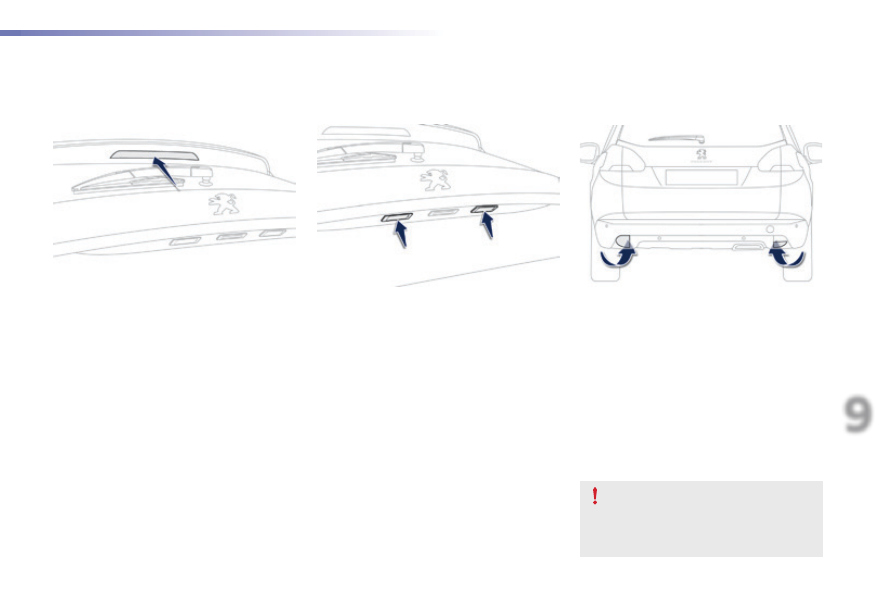Peugeot 2008 (2016 year). Manual - part 14

207
9
Practical information
2008_en_Chap09_info-pratiques_ed01-2016
Changing the third brake lamp
(light-emitting diodes - LEDs)
Contact a PEUGEOT dealer or a qualified
workshop.
Number plate lamps
To facilitate the removal of the lamp, carry out
this operation with the tailgate half open.
F Insert a thin screwdriver into the lens
cutout.
F Push it outwards.
F Remove the lens.
F Change the faulty bulb.
To refit, press on the lens to clip it in place.
Access is by passing a hand under the bumper.
F Turn the bulb holder an eighth of a turn and
pull it out.
F Change the failed bulb.
To refit, carry out these operations in reverse
order.
Changing a foglamp or reversing
lamp bulb
On the left hand side, take care to not
touch the exhaust silencer; risk of burns
if changing a bulb after stopping the
engine.